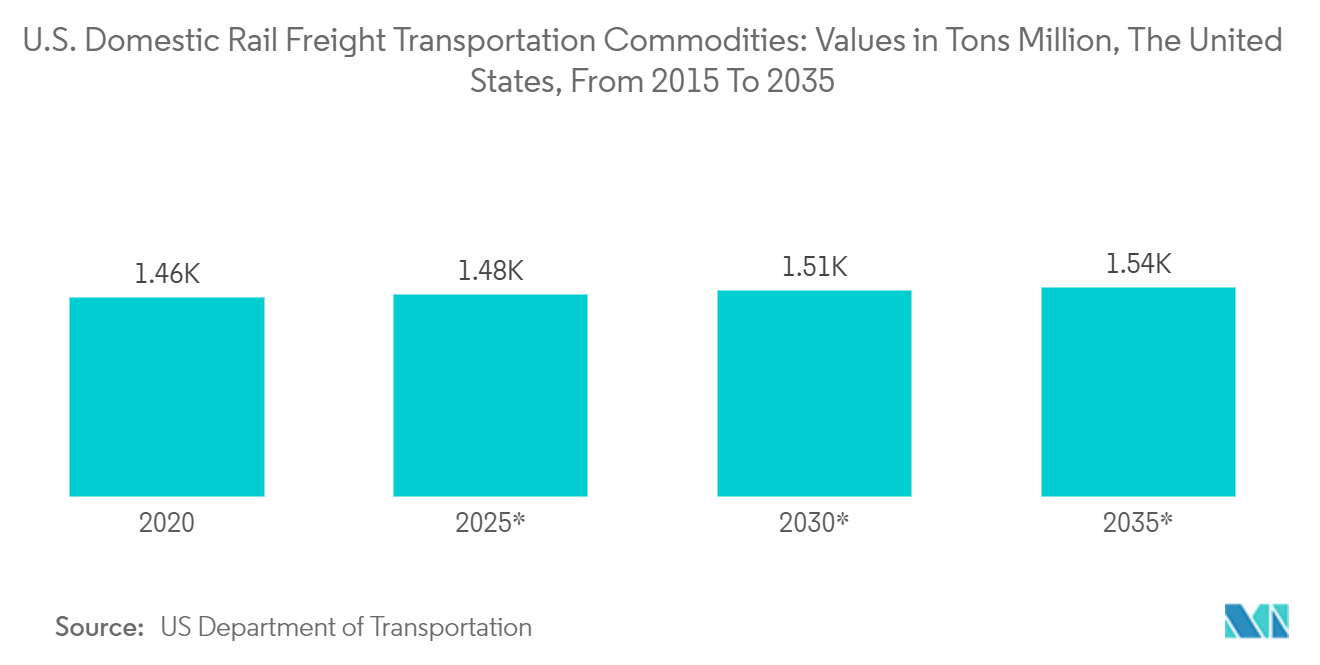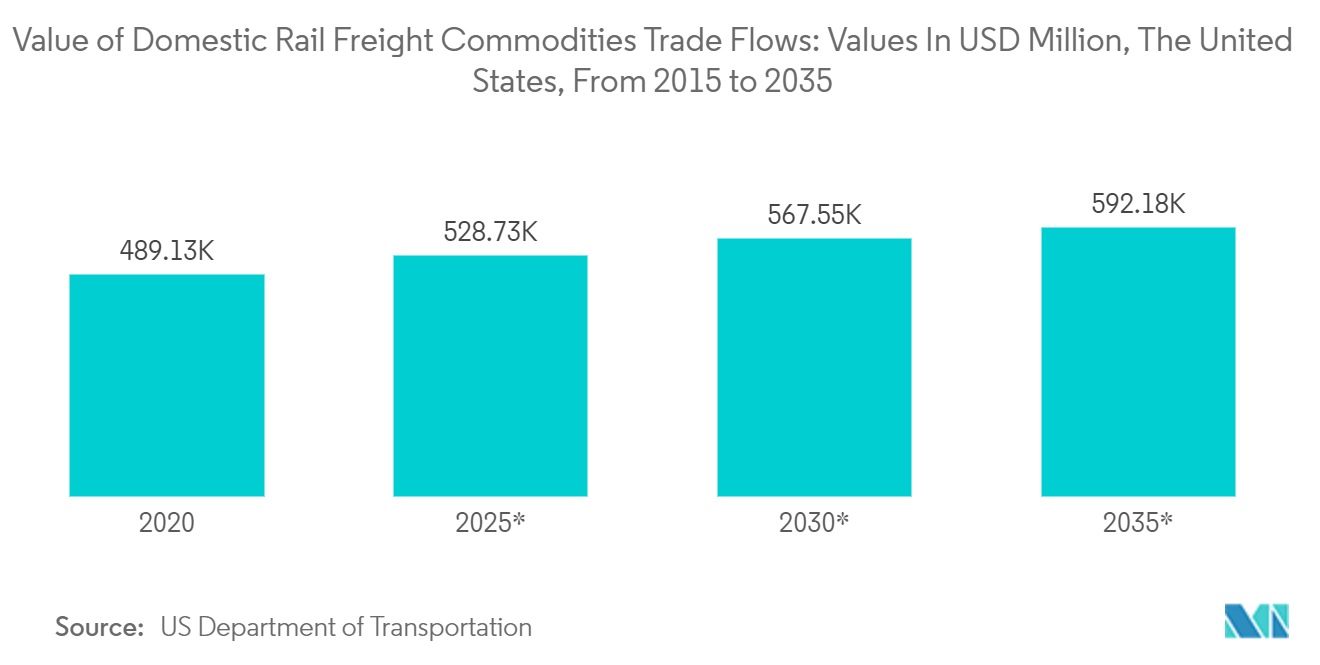Market Trends of United States Rail Freight Transport Industry
This section covers the major market trends shaping the US Rail Freight Transport Market according to our research experts:
Demand on The US Freight Rail Network Increase
The market for freight rail transportation is expected to increase by as much as 30% to 40% by 2050, and the United States now boasts the largest and most lucrative freight railway network in the world. The US consumer demand alone, which has been increasing since the summer of 2021, is predicted by economists and experts to increase by between 30% and 40% over the following few decades, fueling the need for land-based transportation of commodities. In addition, while the US's freight rail efficiency is far superior to that of the rest of the world, it trails behind the rest of the world in terms of passenger trains. About 40% of the nation's long-distance freight is transported via the nation's 140 000 miles of rail lines. While trains are increasingly delivering consumer products as the e-commerce boom continues, freight rail competes directly with trucking to move automobiles, coal, and chemical cargo. There are seven significant freight rail networks in the US, and the top five companies reported a combined operating revenue.

Low Cost of Transporation and Modal Shift Drive The Market
Rail freight transport is more affordable and effective than other modes of transportation because it enables the delivery of more cargo over greater distances. Rail transport is believed to be six to seven times more effective than driving, with pollution reductions of 30% to 80%. Additionally, the cost of train travel is just 10% more expensive than that of vehicle travel. These factors affect the decision of governments to use rail freight transportation. Companies that use rail for freight transportation continually invest to reduce costs for customers. For instance, a strong increase in tonnage per train during the previous ten years has allowed them to deliver more freight. Since the lower interest rates for the money that is being held up partly balance the higher transportation costs, rail freight is a relatively affordable shipping alternative. Train transportation costs are less costly. The cost of rail transit is about one-tenth that of driving a car, and it consumes only a quarter of the quantity of petroleum that driving a car does.

